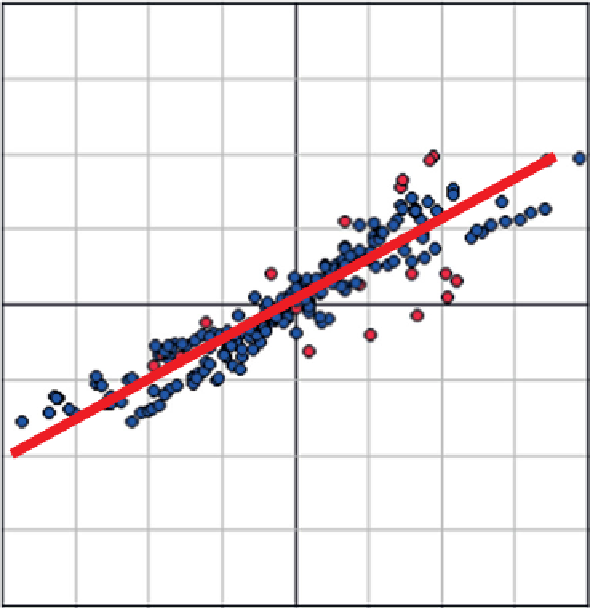Geology Reference
In-Depth Information
0.1
OWC
0.05
0
-0.05
Top oil sand
Wet lithologies
-0.1
Near (10º)
Figure 5.60
AVO projections in near vs far space.
5.5.2 Angle-dependent impedance
It was commonplace prior to the late 1990s for
seismic inversions of full stack seismic data to be
calibrated using acoustic impedance. Given the devel-
opments in the understanding of AVO, however, it
became clear that acoustic impedance is relevant only
for zero offset (i.e. intercept)
V
p
V
s
ρ
c
,
EI
ðÞ¼
ð
:
Þ
5
20
where
a
(1 + tan
2
¼
θ
)
8k sin
2
b
¼
θ
4k sin
2
¼
θ
c
(1
) and
¼
V
s
V
p
2
k
:
'
stacks
'
. Connolly (
1999
)
re-wrote the Aki
Richards (
1980
) equations such that
an elastic impedance could be calculated at any angle
of incidence (
Fig. 5.61
). Not only did this enable
greater precision in non-zero offset inversions but it
also opened the way for evaluating the discriminating
power of AVO using log data. Elastic impedance (EI)
applies when reflection coefficients are small and in
its generalized (two-term) form is defined as:
-
For the three-term case:
1+ sin
2
a
¼
θ:
In a given area, the value of k is kept constant between
different wells:
At
θ ¼
0, EI
¼
AI
:
ð
5
:
21
Þ
99







